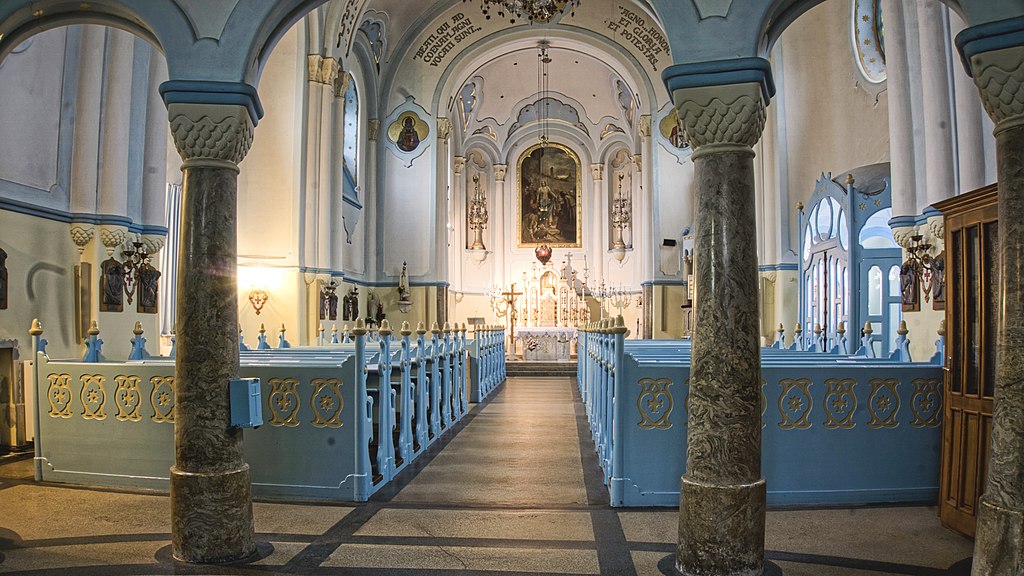This month, our ‘Christian Heritage month by month’ column presents the church of Saint Elisabeth, the 20th century “blue church” in the Archdiocese of Bratislava, in Slovakia.
Originally planned as a small chapel adjacent to the royal Catholic grammar school of one of the growing districts of Bratislava at the time, the Church of Saint Elisabeth – today known as the “blue Church” – is an exemplary feature of the cultural and architectonic Christian landscape of the Slovak capital.
Although the religious building was meant to only serve the needs of school students and staff, it became clear at the beginning of the 20th century that such a church also had to be designed to welcome the rising number of city dwellers in the area.
To celebrate the 700th anniversary of the birth of Saint Elisabeth of Hungary, the first stone was laid in 1909 and the works to build a place of contemplation and prayer in honour of the Saint began, supported by modest citizens and noble families alike. Later consecrated in 1913, the church was built in Hungarian-Secessionist style and in its specific colour, obtained by tiny blue ceramic plates, both on the external walls and on the roof.
The leitmotif of the roses is also evidently present and it is a powerful reminder of the story of St Elisabeth, patron of charity, who tenaciously helped the poor and the emarginated by generous acts of charity.
Today, the church has become a sightseeing attraction, due to its unconventional colour. Yet, it also powerfully reminds both tourists and faithful of the generosity of Saint Elisabeth and the devotion of the citizens of Bratislava to the Hungarian Saint.









